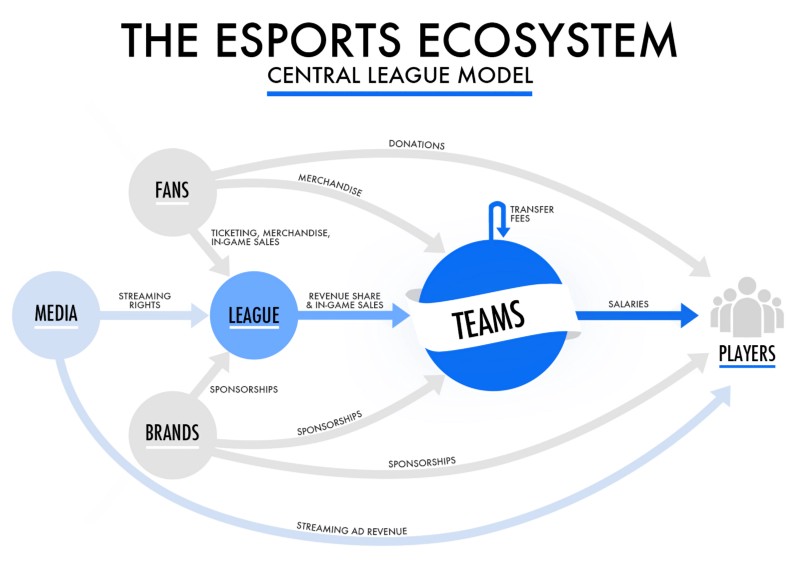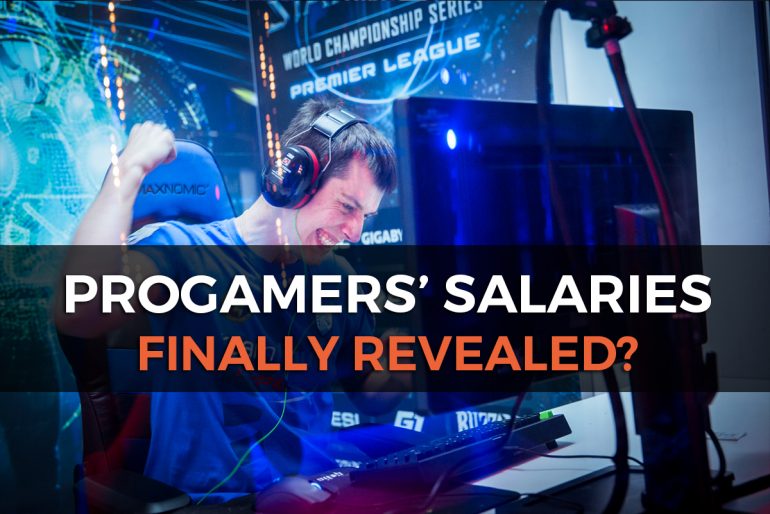Lately a big debate has been unfolding on the web: should we reveal a progamer’s salary? It’s Jonathan Pan, CEO of the team Ember who first took the initiative of revealing his player’s salaries. Following this, several people spoke out: observers like Thorin and Richard Lewis, owners, club managers and even several players… Contrasted opinions, no real unanimity and a debate that remains unanswered. But what must we think of all this? SmarCast enters the dance and gives you its point of view!
Is it so important to know the salaries?
Yes because our industry needs clarity. Electronic sport is getting closer and closer to a private league system in terms of economy with franchises and numerous American championships. And that’s a good thing! With many regulation mechanisms it’s the system that offers the most sports’ equity and therefor the best entertainment.
In traditional sport, the amount of these franchises is determined according to precise market analysis. The studies themselves are asked for by “league commissioners”. Today the entrance fee to enter the League of Legends Championship Series, whether it be in the USA or in Europe is estimated to be between 800 000 and 1 200 000. But what can we base this upon if we don’t know the player’s salaries, the team’s revenues or the audiences of the official competitions?
Let’s not forget that the first source of revenue of our sector is the public as well as brand sponsorship. But these companies invest money hoping to capture the fans’ attention. Jonathan Pan has created a very interesting cartography that shows the monetary flows in the world of competitive video gaming.

Right now no one is being transparent on this issue. Electronic sport is an incredibly competitive domain that is in the middle of a huge expansion and every party is attempting to maximize their profits. But we must remember that a lack of communication could have some negative effects: such as a shift in competitive balance between clubs, a delocalization of some franchises or the creation of a rival competition… And in the worst outcome that we can imagine, the deregulation of the entire sector. But more immediate still, we could have players without any organization defending their interests. In case of discord between players and the structures supporting them, they could simply decide not to play, to go on strike. We would witness a “lock-out” situation similar to what we saw in the NBA in 2011!
At the time, players and club managers were fighting about the NBA’s revenue distribution: 57% for the players, 43% for the club owners. Some clubs were having financial difficulties and the people in charge wanted to increase their cuts, while the players were refusing to go below 53%. Even if it was on a completely different scale from esports today, the last lock-out cost the NBA over 200 million dollars, and this does not take into account the sales repercussions for affiliated products.

Current events are showing us once again that many players are leaving their structures because of payment issues, promises that aren’t being kept. It’s important for all parties involved to be able to organize themselves in order to better negotiate in the most equal way possible. And to be able to negotiate one’s cut, it’s important to know the size of the cake! Our ecosystem is still too fragile to be deprived of several months of competition caused by a possible lock-out.
If it does not have independent regulation mechanisms, electronic sport must play the transparency game. On the one hand for investors and club owners who could invest in a reasonable manner and avoid creating a bubble that could shatter. And on the other hand players will be able to better negotiate their contracts. This will also allow the sector to better understand itself and thus become more stable and build itself a brighter future. Revealing the player’s salary alone is not a miracle formula, but it would be a first step that would force organizations to give more information on their revenue sources. This could eventually allow us to better identify the sector’s weaknesses.
Is it really such a constraint for clubs?
In his article, Marty Strenczewilk, CEO and co-founder of the team Splyce, explains that revealing salaries is very constraining for clubs. The competitive video gaming world is still very young, companies are behaving like start-ups and cannot permit themselves to give out such strategic information to their competitors. However, there is a difference between the competitive video game market and the business world as a whole: it’s that e-sport is not a race to see who will find the best economic model. It’s the creation of a complete ecosystem where many different actors must work together to exist and grow.
As we said, revealing salaries would also shed some light on other pieces of information considered to be sensitive for a club. However is this really a problem? In France the professional football league publishes every year the individual accounts of each professional club alongside an activity report on the financial situation of professional football. So yes, salaries are complex numbers that depends on many factors. But if a club has a clear managerial line, it’s easy to explain the differences in salary between two players of the same team. Others will argue that a competing team will simply have to make the player a better offer than he has from his current team in order to dislodge him. But isn’t it also part of a team’s role to seduce the player through a complete sports’ project, not just a competitive salary? Is this not a perfect opportunity to stop mercenary tactics between teams in order to clean up our game?
Tanslate by James Berry


